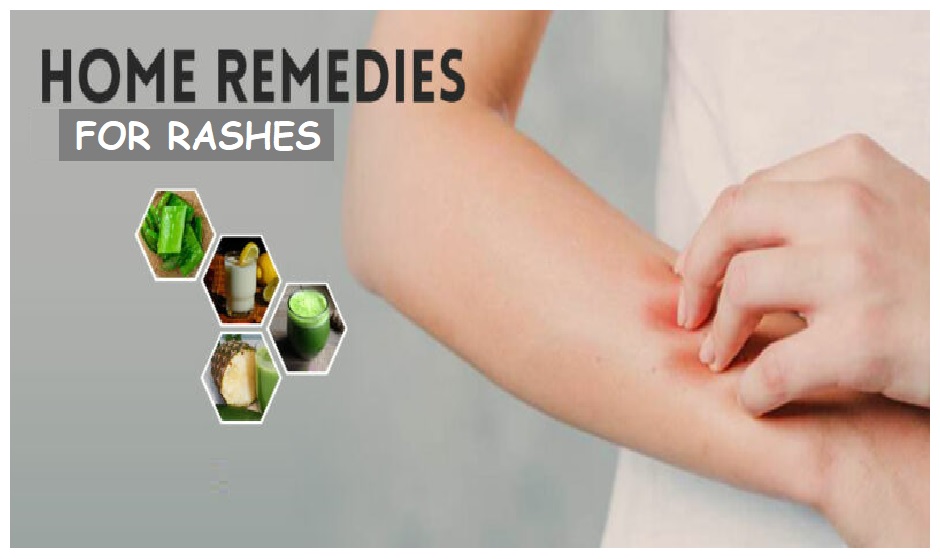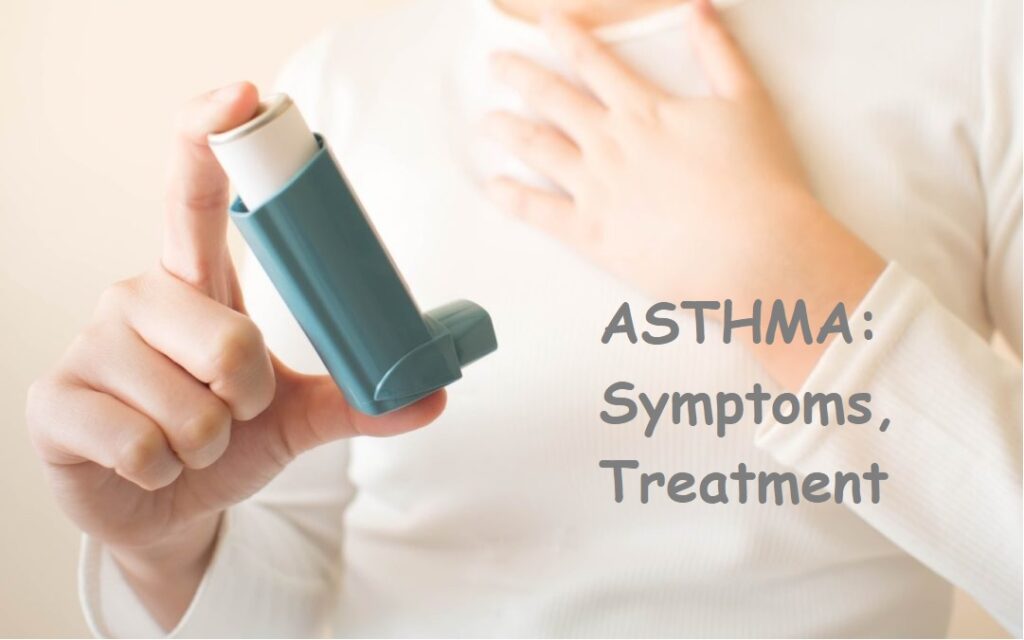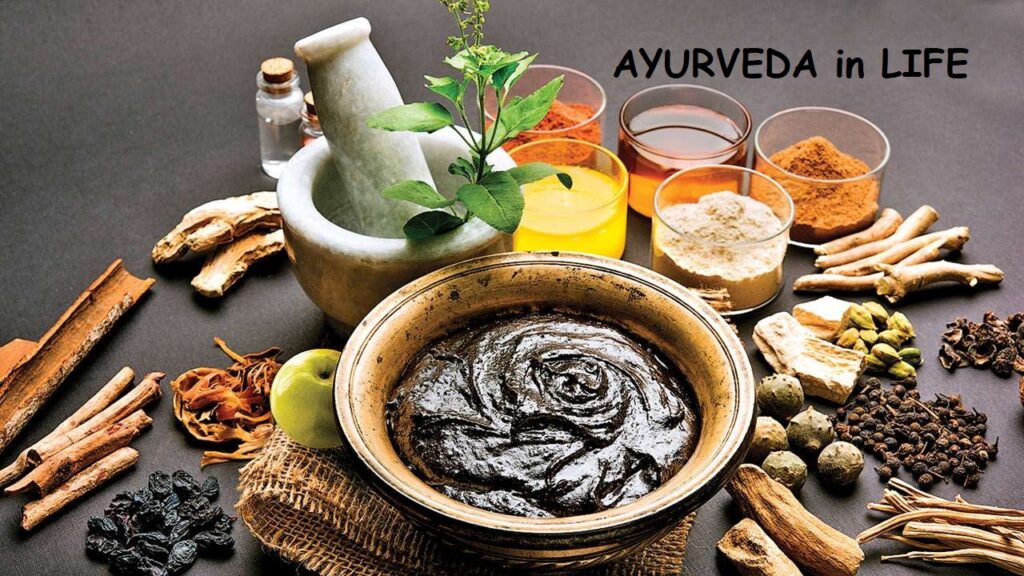Rashes Meaning:
A rash encompasses any region of skin that is irritated or swollen, often causing itchiness and discomfort, with variations in appearance across different skin tones. Occasionally, a rash could indicate a medical emergency.
How can I identify my rash?
To determine the cause of your rash, it’s advisable to consult a certified dermatologist. Identifying the cause independently can be challenging due to the varied presentations of rashes, including splotches, bumps, or blisters, which may itch, scale, or appear red. Moreover, they can manifest differently across various skin tones, appearing in specific areas or spreading across the body. Rashes might also fluctuate, disappearing and reappearing sporadically or persisting indefinitely.
What are the five categories of rashes?
Rashes encompass numerous types, often with subcategories. Generally, they can be classified into those resulting from infection, allergic responses, environmental irritation, plant interactions, and autoimmune conditions.
What’s the quickest method to alleviate a rash?
Several home remedies may provide relief from rash discomfort. However, the effectiveness and recovery time vary depending on the underlying cause. Consultation with a dermatologist is recommended to identify the specific rash and determine the appropriate treatment.
Regardless of the cause, rashes can be intensely itchy.
Doctors commonly recommend creams, lotions, or antihistamines for relief and may also suggest cold compresses or home remedies.
Avoiding scratching is crucial as it can exacerbate the condition and potentially lead to infection. Below are some relief options to consider, along with explanations of their potential effectiveness.
Cold Therapy Cold Compress: Easy Home Remedies for Rashes
One of the quickest and simplest methods to alleviate the discomfort and itchiness associated with a rash is by applying cold. Whether opting for a cold compress, cool showers, or a damp cloth, cold water can offer immediate relief by reducing swelling, easing itching, and slowing down the rash’s progression.
Consider crafting or purchasing fabric bags filled with ice, which freeze well and can be reheated for other purposes.
How to Apply:
- Fill an ice bag or plastic bag with ice cubes, or dampen a cloth with cold water.
- Place a cloth over the affected area (avoid direct contact of ice with the skin).
- Hold it against your skin until the itching or pain diminishes.
- Repeat the process as necessary.
How it Functions:
Cold application restricts blood circulation to the inflamed region. By applying ice or cold water to a rash, it aids in diminishing swelling and inflammation, providing nearly instant relief from itching. In cases where rashes extend over larger areas of the body or affect regions challenging to cover with an ice pack, a refreshing bath or shower can offer relief.
How can we Get it?
Cold compresses can be obtained from pharmacies, medical supply stores, or online retailers. They are often available in the form of reusable gel packs, instant cold packs, or fabric bags filled with ice. Additionally, you can easily make a cold compress at home by wrapping ice cubes in a clean cloth or towel.
Oatmeal Bath Oats (Avena Sativa): Easy Home Remedies for Rashes
Oatmeal bath have been utilized for centuries to address various skin ailments, ranging from eczema to burns. The U.S. Food and Drug Administration (FDA) sanctioned the use of colloidal oatmeal as a skin protectant in 2003. Nowadays, numerous over-the-counter skincare products incorporate oatmeal.
Colloidal oatmeal, when dissolved in a bath, can alleviate itchiness. Ready-to-use packets of oatmeal bath, such as Aveeno, are available, pre-measured for a single bath. Alternatively, you can finely grind regular oatmeal in a food processor or blender and add one cup to the bathwater.
How to Apply:
- Fill your bathtub with warm water.
- Mix one cup (or one packet) of colloidal oatmeal into the water.
- Immerse yourself in the water and soak for 30 minutes.
- Rinse off with a lukewarm shower.
How it Functions:
Oatmeal acts as both an anti-inflammatory and antioxidant agent, providing relief from skin itchiness, dryness, and roughness. Research studies indicate that the oils present in oats collaborate to aid in skin repair.
Oats encompass anti-inflammatory components like linoleic oil, oleic acid, and avenanthramides, which work in concert to lower the body’s cytokine levels, proteins released by cells that induce inflammation.
In alternative formulations, such as creams, colloidal oatmeal has demonstrated its ability to enhance the skin barrier.
How can we Get it?
You can find oatmeal bath products at pharmacies, health food stores, and many supermarkets. Additionally, you can purchase oatmeal bath packets or oatmeal-based bath products online from various retailers. Alternatively, you can make your own oatmeal bath by grinding regular oatmeal into a fine powder and adding it directly to your bathwater.
Discover 9 Factors Behind Your Sleep Troubles and How to Address Them
Fresh Aleo Vera: Easy Home Remedies for Rashes
The aloe vera plant has been employed for centuries as a remedy for health and skincare purposes. Its application to aid in the healing of minor cuts in household settings is well-known.
Aside from wound healing, aloe vera is recognized for its anti-inflammatory, antimicrobial, antiviral, and antioxidant properties. Despite its widespread use, much of the evidence supporting its efficacy is anecdotal, necessitating further research.
How to Apply:
- The transparent gel extracted from aloe leaves can alleviate itching and irritation of the skin.
- It is advisable to cleanse and dry the affected area before applying aloe to ensure maximum absorption.
- If you have an aloe plant, you can slice open a leaf, extract the gel, and directly apply it to the affected skin.
- Commercial aloe preparations are available in drugstores, which may be more convenient. However, fresh aloe is preferred due to potential degradation and loss of effectiveness over time.
- Use aloe twice daily or as recommended by your physician.
How it Functions:
Aloe contains a variety of nutrients including vitamin B-12, calcium, magnesium, zinc, vitamins A, C, E, and essential fatty acids. Additionally, it contains enzymes, carbohydrates, and sterols, which are believed to play a role in its anti-inflammatory properties.
Aloe vera gel is generally regarded as safe for topical application on the skin. However, allergic reactions to aloe vera are possible.
How can we Get it?
Aloe vera plants: Purchase an aloe vera plant from a nursery or garden center. You can extract the gel directly from the leaves by cutting them open.
Aloe vera gel: Aloe vera gel is available in tubes or bottles at pharmacies, health food stores, supermarkets, and online retailers. Look for products labeled as 100% pure aloe vera gel for the best results.
Fresh aloe vera leaves: Some grocery stores and health food stores sell fresh aloe vera leaves. You can cut open the leaves and extract the gel yourself.
Ensure to use pure aloe vera gel without added ingredients like fragrances or colors for the most effective treatment of rashes.
Coconut Oil: Easy Home Remedies for Rashes
Coconut oil, derived from the flesh and milk of coconuts, has been utilized for centuries in tropical regions both as a cooking oil and a skin moisturizer. With its high content of saturated fats, it boasts antiseptic and anti-inflammatory characteristics.
Individuals with coconut allergies should conduct a patch test on a small area of the inner arm. If no adverse reactions occur within 24 hours, it is generally safe for use. However, discontinue use if irritation arises.
How to Apply:
- Coconut oil serves as a safe moisturizer for the skin and scalp, suitable for application across the entire body or specifically on areas prone to itchiness.
- Virgin (unrefined) coconut oil is preferable because it maintains its antioxidant and antimicrobial properties.
How it Functions:
The medium-chain fatty acids present in virgin coconut oil are believed to possess antibacterial, antiviral, anti-inflammatory, and healing properties. Specifically, a monoglyceride derived from lauric acid, a component of coconut oil, exhibits antibacterial effects. Lauric acid constitutes approximately half of the fat content in coconut oil.
In a well-controlled clinical trial conducted in 2004, both virgin coconut oil and mineral oil were found to significantly enhance skin hydration and surface lipid levels in individuals with dry, scaly, and itchy skin (xerosis). Interestingly, coconut oil demonstrated slightly superior performance compared to mineral oil.
A clinical trial conducted in 2013 comparing virgin coconut oil to mineral oil for treating newborns with atopic dermatitis yielded similar outcomes. Additionally, another study involving pediatric patients with atopic dermatitis concluded that coconut oil outperformed mineral oil in enhancing skin hydration and barrier function.
Further research has indicated that coconut oil reduces the severity of dermatitis and facilitates wound healing.
How can we Get it?
You can obtain fresh coconut oil to treat skin rashes in the following ways:
Whole coconuts: Purchase fresh whole coconuts from grocery stores, farmers’ markets, or specialty stores. You can extract coconut oil by grating the coconut meat and then pressing it to extract the oil.
Coconut meat: Some grocery stores or health food stores sell fresh coconut meat. You can extract coconut oil from the meat using a cold-press method or by blending and straining it.
Freshly made coconut oil: Look for local producers or artisans who make fresh coconut oil. You may find them at farmers’ markets or specialty stores.
Ensure that the coconut oil you use is fresh and pure, without any additives or preservatives, for the best results in treating skin rashes.
Tea Tree Oil Originating from Australia, where it was traditionally utilized by indigenous communities for its antiseptic and anti-inflammatory properties, tea tree (Melaleuca alternifolia) is an essential oil extracted via steam distillation from the plant.
A frequently referenced study conducted by the American Society of Microbiology in 2006 elucidates the antimicrobial attributes of tea tree oil, underscoring its potential efficacy in treating skin conditions like acne. Additionally, there exists anecdotal evidence supporting its utility in skincare.
How to Apply:
- When applying tea tree oil directly onto the skin, it should always be diluted to prevent excessive dryness.
- Utilized alone, it may have a drying effect. Dilute it by combining a few drops with other oils, such as coconut oil or olive oil.
- Alternatively, blend it with your moisturizer. Apply it to the affected area post-bath or shower.
- Exercise caution when using it near the eyes, such as for itchy scalp or eyelids.
- Commercial products containing tea tree oil, like shampoos and foot creams, are also available.
- Tea tree oil is toxic if ingested, and some individuals may experience allergic reactions to it.
How it Functions:
Tea tree oil is purported to combat bacterial, viral, fungal, and protozoal skin infections, although the exact mechanism remains incompletely understood. It is believed that the terpenes, unsaturated hydrocarbons present in tea tree oil, disrupt the cellular structure of bacteria.
Tea tree oil possesses potent properties and can cause irritation if applied directly to the skin without prior dilution in a cream or oil.
How can we Get it?
You can obtain fresh tea tree oil to treat skin rashes through the following methods:
Specialty stores: Many health food stores, natural product stores, and specialty skincare shops carry fresh and high-quality tea tree oil.
Online retailers: Numerous online platforms offer a wide range of tea tree oil products, including fresh and pure options. Ensure to read reviews and verify the product’s authenticity and quality before making a purchase.
Local producers: Some local producers or artisans may offer freshly made tea tree oil at farmers’ markets, craft fairs, or through direct sales.
When purchasing tea tree oil, look for products that are 100% pure and free from additives or dilutions for the most effective treatment of skin rashes.
Baking Soda
Baking soda, scientifically known as sodium bicarbonate, is a traditional household remedy for alleviating itchy skin conditions such as rashes, poison ivy, or bug bites.
How to Apply:
- Add 1 to 2 cups of baking soda into a tub filled with lukewarm water and soak.
- Afterward, rinse off, gently pat dry, and apply moisturizer. Alternatively, create a paste by mixing a small amount of water with baking soda and apply it to the affected area.
How it Functions:
The chemical composition of baking soda serves as a buffer, maintaining a stable acid-alkali balance in solutions. Consequently, baking soda may help soothe the skin by restoring its pH balance.
How can we Get it?
You can obtain baking soda to help alleviate skin rashes in various ways:
Grocery stores: Baking soda is commonly found in the baking aisle of most grocery stores. It is usually available in boxes or bulk bins.
Pharmacies: Many pharmacies stock baking soda, often in the medicinal or first aid section, as it is used for various home remedies and treatments.
Online retailers: Numerous online platforms offer baking soda for purchase, providing convenience and accessibility for those who prefer online shopping.
When using baking soda to treat skin rashes, ensure that it is pure baking soda without any added ingredients or fragrances.
Indigo Naturalis
Indigo naturalis, derived from a dried Chinese herb known as Qing Dai, is a dark-blue powder.
Studies have indicated that indigo naturalis may offer effectiveness as a topical treatment for mild to moderate psoriasis and inflammatory conditions.
How to Apply:
- Indigo naturalis is utilized as an ointment, applied twice daily to the affected area.
- It tends to stain both the skin and clothing blue, posing challenges in its application. While the dye can be removed with washing, its visibility may still be unsightly.
- Crude indigo naturalis can undergo refinement to eliminate the dye while maintaining its efficacy, as demonstrated in a controlled trial reported in 2012. Commercial formulations of indigo naturalis are available.
How it Functions:
The precise mechanism by which indigo naturalis reduces inflammation remains incompletely understood. It is believed to involve the herb’s components, tryptanthrin and indirubin, which interact with interleukin-17, a cytokine involved in inflammation production. Ongoing research is exploring the constituents of indigo naturalis.
There are inherent risks associated with the use of any herbal remedy, including variability in purity and dosing standards, potential interactions with prescribed medications, and the risk of organ damage, such as to the liver or kidneys.
How can we Get it?
You can obtain Indigo Naturalis to help treat skin rashes through the following methods:
Traditional Chinese Medicine (TCM) stores: Indigo Naturalis, known as Qing Dai in Chinese, is commonly used in traditional Chinese medicine. TCM stores may carry this herbal remedy in various forms, such as powder, capsules, or ointments.
Online retailers: Numerous online platforms specialize in traditional herbal remedies and may offer Indigo Naturalis products for purchase. Be sure to verify the authenticity and quality of the product before making a purchase.
Specialty stores: Some specialty health food stores or holistic wellness stores may stock Indigo Naturalis products due to its popularity in alternative medicine circles.
When using Indigo Naturalis to treat skin rashes, it’s essential to consult with a healthcare professional or traditional Chinese medicine practitioner for guidance on dosage and usage, as well as to ensure it is appropriate for your specific condition.
Apple Cider Vinegar
Apple cider vinegar has been utilized for centuries as a remedy for various skin and health issues. It is renowned for its antimicrobial properties. While there exists abundant anecdotal evidence supporting its use, scientific studies are relatively limited.
How to Apply:
- For relief from an itchy scalp, you can apply apple cider vinegar either undiluted or diluted a few times per week.
- However, refrain from using it if you have cracked or bleeding skin on your scalp. Some individuals find relief by incorporating apple cider vinegar into their bath routine.
How it Functions:
A study conducted in 2018 examined the impact of apple cider vinegar on common bacteria known to cause inflammation: E. coli, S. aureus, and C. albicans. The study revealed that apple cider vinegar exhibited significant efficacy in reducing the production of cytokines responsible for inflammation in laboratory cultures.
How can we Get it?
You can obtain apple cider vinegar to help alleviate rashes through the following methods:
Grocery stores: Apple cider vinegar is commonly available in the vinegar section of most grocery stores. It is typically sold in bottles of various sizes.
Health food stores: Many health food stores carry organic and raw varieties of apple cider vinegar, which may be preferred by some individuals for its potential health benefits.
Online retailers: Numerous online platforms offer apple cider vinegar for purchase, providing convenience and accessibility for those who prefer online shopping.
Ensure to choose raw, unfiltered apple cider vinegar with the “mother” intact, as this form contains beneficial enzymes and probiotics that may aid in skin health. Additionally, dilute apple cider vinegar with water before applying it to the skin to avoid irritation. If you experience any adverse reactions, discontinue use and consult with a healthcare professional.
Epsom Salts (or Dead Sea Salts)
Epsom salts, composed of magnesium sulfate, have long been utilized in warm baths to alleviate muscle aches and pains. Additionally, soaking in Epsom salts or mineral-rich Dead Sea salts may aid in relieving itching and scaling.
How to Apply:
- Pour 2 cups of Epsom salts or Dead Sea salts into a warm bathtub. (For children, it’s advisable to consult with a doctor regarding the appropriate amount.)
- Soak in the bath for 15 minutes. After soaking, rinse off, gently pat dry, and apply moisturizer.
How it Functions:
Magnesium salts have been shown to enhance the skin’s barrier function, promote moisture retention, and reduce inflammation. The practice of bathing in the Dead Sea has been employed for centuries to address skin ailments. A 2012 study evaluating Dead Sea bathing in conjunction with sun therapy demonstrated favorable outcomes for atopic dermatitis.
How can we Get it?
You can obtain Epsom salts or Dead Sea salts to help alleviate rashes through the following methods:
Grocery stores: Epsom salts are commonly available in the pharmacy or personal care section of most grocery stores. Dead Sea salts may be found in some specialty or health food stores.
Pharmacies: Many pharmacies carry Epsom salts, often in the first aid or foot care section. Some pharmacies may also offer Dead Sea salts, particularly those with a focus on natural or alternative remedies.
Health food stores: Health food stores typically carry a variety of natural remedies, including Epsom salts and Dead Sea salts. Look for these products in the bath and body care section.
Online retailers: Both Epsom salts and Dead Sea salts are readily available for purchase from online retailers. This option provides convenience and accessibility, especially for individuals who prefer online shopping.
When using Epsom salts or Dead Sea salts to treat rashes, it’s essential to follow the recommended instructions for use and consult with a healthcare professional if you have any concerns or underlying medical conditions.
Plant Oils
Various plant oils can effectively moisturize itchy skin. Some examples include:
- Olive oil
- Safflower seed oil
- Argan oil
- Jojoba oil
- Chamomile oil
Each oil possesses distinct compounds that exert different effects on the skin. Research is ongoing to investigate the effects of these and other plant-derived oils on dermatitis.
How to Apply:
*Plant-based oils are available either individually or in formulations designed for skin lubrication, offering moisturizing benefits as needed.
How it Functions:
In general, oils work to mitigate inflammation and establish a protective barrier on the skin.
Olive Oil: Known for its anti-inflammatory properties and wound-healing abilities, olive oil contains oleic acid and various fatty acids, along with approximately 200 different chemical compounds.
Safflower Seed Oil: This oil, rich in polyunsaturated linoleic acid (constituting 70% of its composition), exhibits anti-inflammatory properties attributed to compounds like luteolin and glucopyranoside.
Argan Oil: Research suggests that regular use of argan oil improves skin elasticity and hydration. Comprising primarily mono-unsaturated fatty acids, it also contains polyphenols, tocopherols, sterols, squalene, and triterpene alcohols, facilitating softening and aiding in the delivery of topical drugs.
Jojoba Oil: With anti-inflammatory properties, jojoba oil contributes to repairing the skin barrier in dermatitis and is commonly found in cosmetic products. Additionally, it enhances the absorption of topical medications.
Chamomile Oil: Traditionally used for soothing skin, chamomile oil possesses three key ingredients (azulene, bisabolol, and farnesene) known for their anti-inflammatory or antihistamine effects. A study conducted in 2010 demonstrated that chamomile oil reduced scratching and suppressed histamine activity in mice with atopic dermatitis.
How can we Get it?
You can obtain plant oils to help alleviate rashes through the following methods:
Grocery stores: Some common plant oils, such as olive oil, may be available in the cooking oil section of grocery stores. Look for pure, cold-pressed oils without additives or preservatives.
Health food stores: Health food stores typically carry a wide variety of plant oils, including olive oil, coconut oil, and jojoba oil, among others. These oils are often sold in the skincare or natural remedies section.
Online retailers: Numerous online platforms offer a vast selection of plant oils for purchase, providing convenience and accessibility for those who prefer online shopping. Look for reputable sellers that offer high-quality, pure oils.
Specialty stores: Some specialty stores, such as beauty boutiques or herbal remedy shops, may carry a curated selection of plant oils specifically for skincare purposes.
When using plant oils to treat rashes, ensure to choose oils that are suitable for your skin type and sensitivity. Perform a patch test before applying the oil to larger areas of the skin, and discontinue use if any adverse reactions occur. If you have any concerns or underlying medical conditions, consult with a healthcare professional before using plant oils for rash treatment.
In the Nutshell
In conclusion, these 10 easy home remedies offer natural and accessible options for relieving rashes and soothing irritated skin. From cold compresses to plant oils and soothing baths, these remedies draw upon age-old traditions and scientific research to provide relief.
However, it’s essential to use caution and consult with a healthcare professional, especially if you have sensitive skin or underlying medical conditions. With proper care and attention, these home remedies can offer effective relief from rashes and promote overall skin health.







This is so helpful, especially the tips you provided. Thanks a lot!
クンニリングス ポルノの .QvP8VjIQmCm
hello there and thank you for your information – I’ve certainly picked up something new from right here.
I did however expertise a few technical issues
using this web site, as I experienced to reload the site a
lot of times previous to I could get it to load correctly.
I had been wondering if your web host is OK?
Not that I’m complaining, but slow loading instances times will very
frequently affect your placement in google
and could damage your high quality score if advertising and marketing with Adwords.
Anyway I am adding this RSS to my e-mail and can look out for much more of
your respective interesting content. Make sure you update this again soon..
Escape rooms hub
I like this site very much, Its a rattling nice post to read
and get information..
An interesting topic and I’m glad to come across your page where I found some helpful insights. Check out my website Webemail24 too, if you need additional resources about Mobile Gaming.
You’ve done an impressive work on your website in covering the topic. I am working on content about SEO and thought you might like to check out Seoranko and let me what you think.
What fabulous ideas you have concerning this subject! By the way, check out my website at Article Sphere for content about Journalism.
Your writing is top-notch.
This website definitely has all the info I wanted about this subject and didn’t know who to ask.